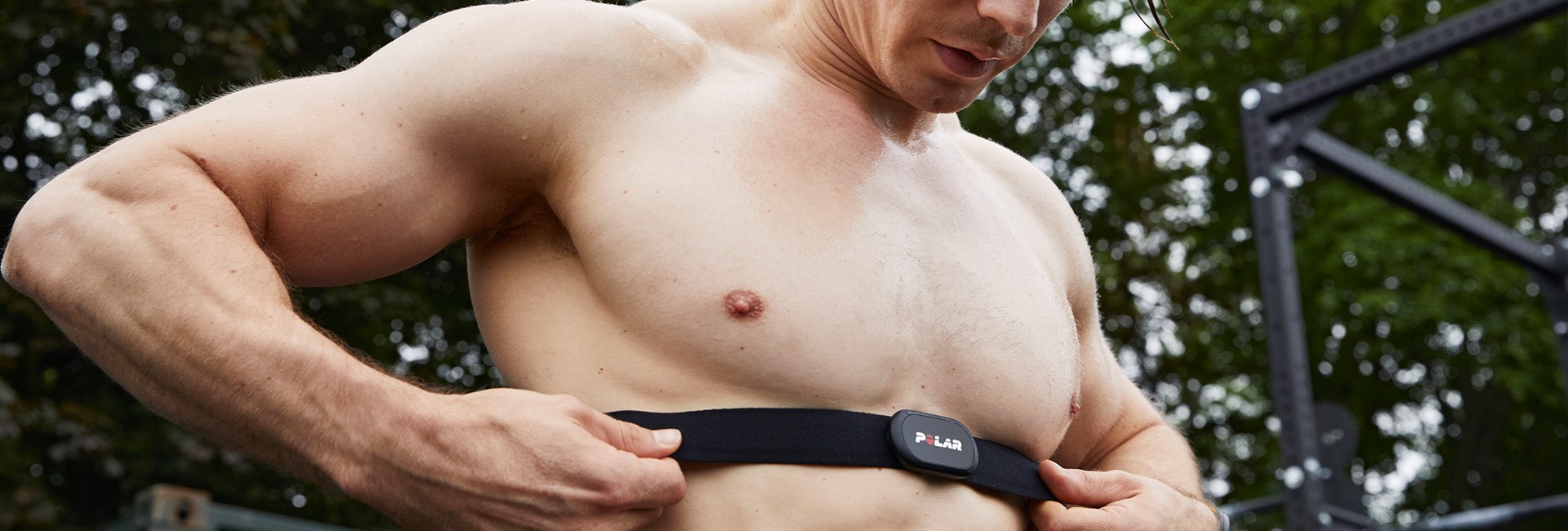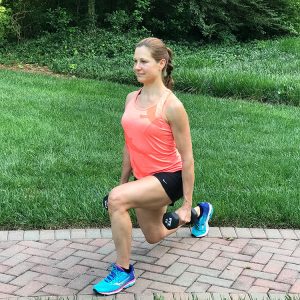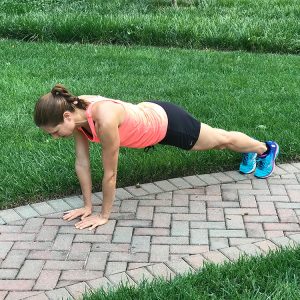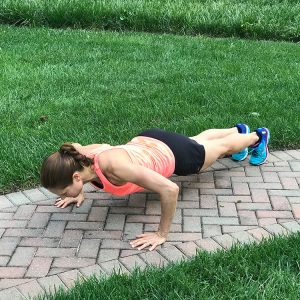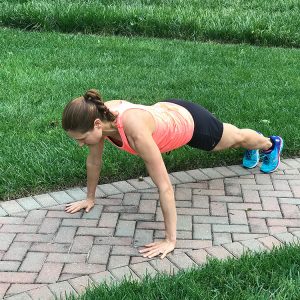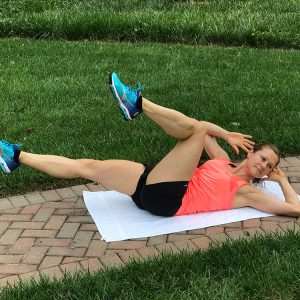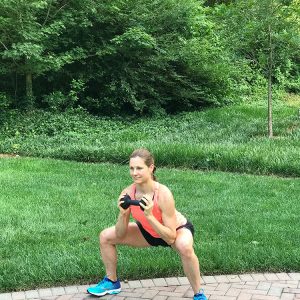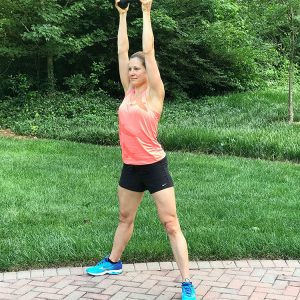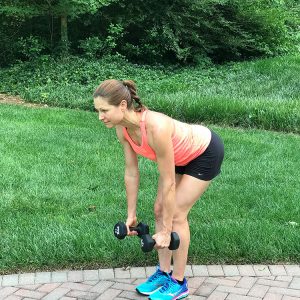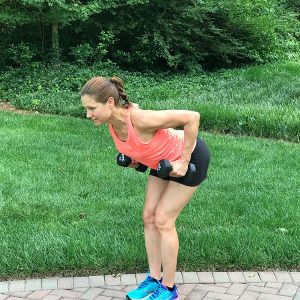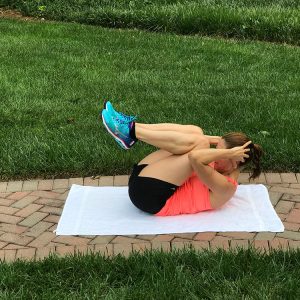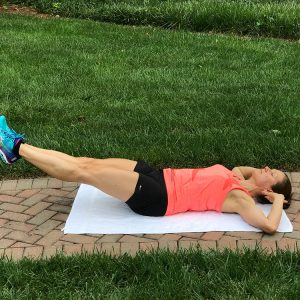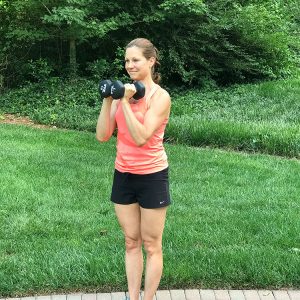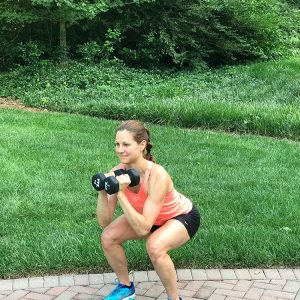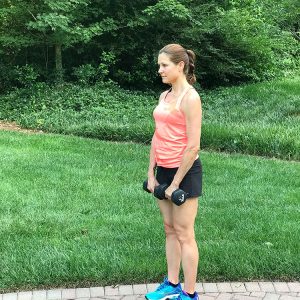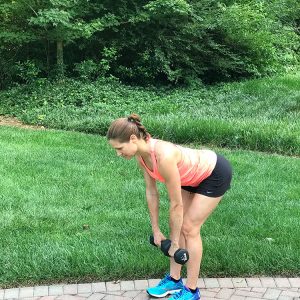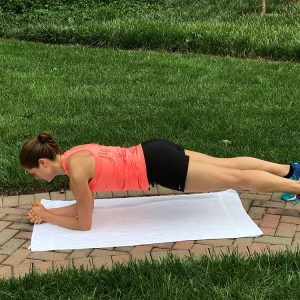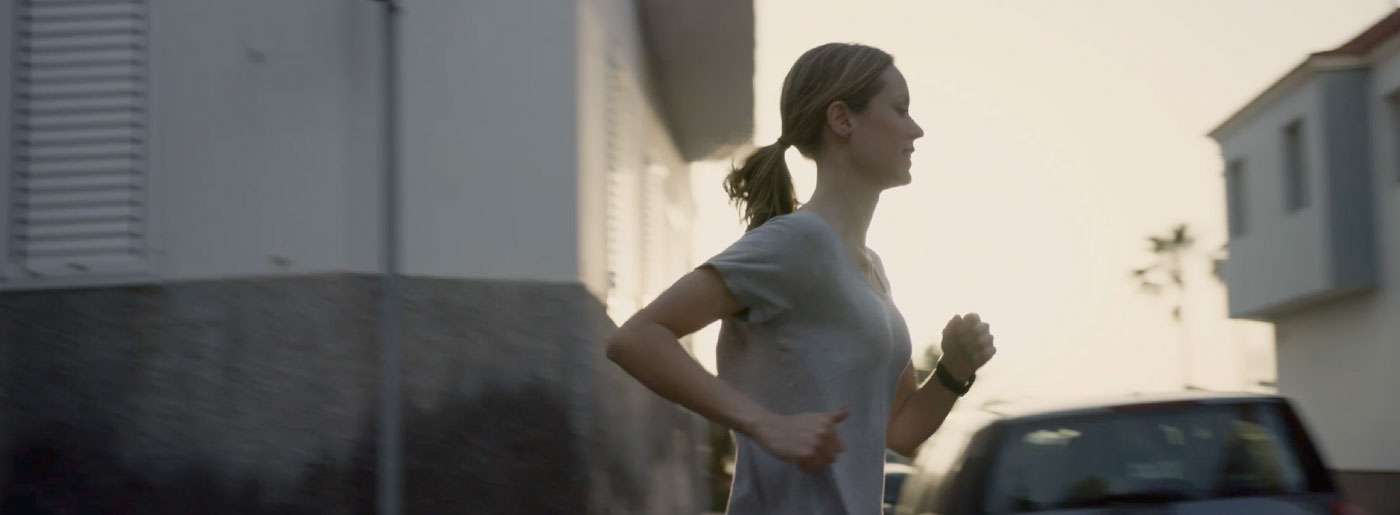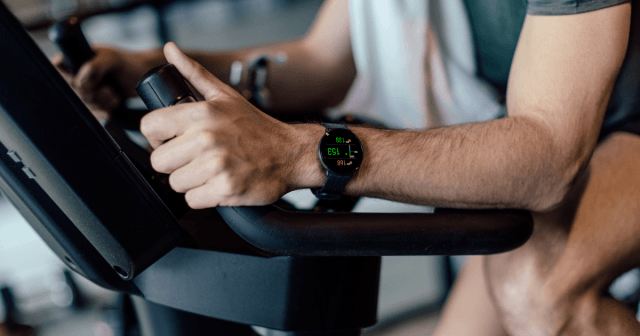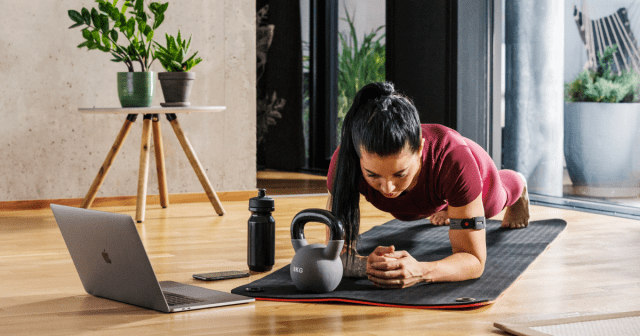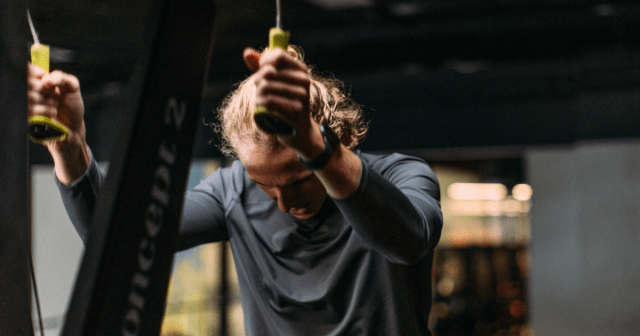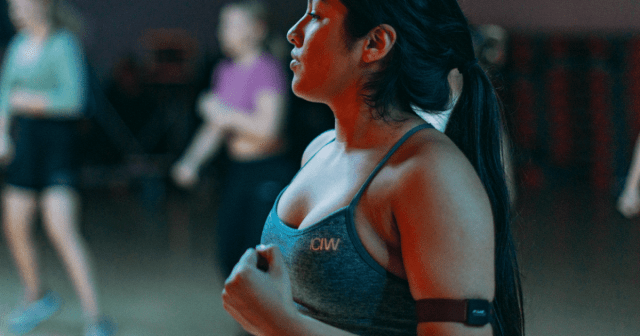These three outdoor workouts feature cardio, strength, and flexibility exercises. They give you a perfect combination to stay in shape without leaving your backyard or terrace.
Taking a long break from working out can turn out to be quite a substantial set-back — you’ll notice it latest when you get back to the gym.
Mixing things up every once in a while is a-ok and doing something different can be great for the body.
Here’s the best part of outdoor workouts: You can enjoy the sunshine and the warmth and still get your endorphins. You don’t even have to get obsessed about exercising for 60 minutes, or else it doesn’t count —a good 30-minute session just three times a week will take you a long way.
Are you worried that the lack of an instructor or coach means you won’t push yourself? Not a problem: strap your heart rate monitor on, and you’ll have your very own personal trainer with you. You can’t cheat the beats so fill up your water bottle, get your gear, and let’s do this!
1. Cardio Outdoor Workout: Hit The Road, Jack!
This is the easiest of cardio workouts, because you can do it pretty much wherever, whenever. All you need is a stretch of road and off you go! A simple, great formula for an awesome cardio is to alternate work-recovery –modes. This is basic interval training.
As a rule of thumb, the harder you push, the longer you rest. If you are a walker, make the intensive phase a power-walk; for joggers, the harder phase is a run; for runners, alternating between a run recovery and an all-out or near-all-out sprint for peak phase gives the best results.
Three options for a super cardio outdoor workout session
Start off with a five-minute walk/jog/run warm-up.
Optional: Follow up with some short warm-up stretches to increase mobility and blood flow in your muscles and joints.
Your heart rate should be at or above 60% of your max. If you are not using a heart rate monitor, you should feel a little out of breath, but you should still be able to carry a conversation.
1. HIGH-LOW OPTION
- After warm-up, do a one-minute all-out or near-all-out push: power-walk, run, or sprint. At the end of your minute you should be very breathless with a heart rate at or near your max, or unable to speak.
- Slow down to a walk or jog and catch your breath for the next four minutes.
- Repeat the 1 minute push – 4 minute recovery four more times, totaling 20 minutes, and then finish the cardio with a 5-minute cool-down walk/jog/run.
Done!
2. PEAK
- After warm-up, increase your pace enough to feel the difference in effort. Your heart rate monitor should show an increase of five to ten beats per minute from your warm-up heart rate.
- Hold the new pace steady for one minute, then increase again and hold for one minute.
- Increase effort level two more times, then return to base level of effort.
- Think of your goals as the warm-up being 50% of your max pace, the first minute increase up to 60%, then 70% for the second, 80% for the third, 90% for the fourth, then 95-100% for the fifth.
- And then do it all over again!
- At the end of minute five you should be very breathless, with a heart rate at or near your max.
- Repeat four times, totaling 20 minutes.
- Cool down for five minutes.
Check!
3. PYRAMID
- After warm-up, increase your speed to a pace that feels like an easy effort (Level 1) and hold the pace for one minute.
- Next, increase your pace significantly for one minute and hold the pace steady (Level 2).
- For the third minute, increase your effort even more and hold (Level 3). At the end of the third minute you should be at or near your max heart rate, puffing and panting.
- For minute four, decrease your effort level back to Level 2.
- Minute five is your base level/recovery.
- Repeat four times, totaling 20 minutes.
- Cool down for five minutes.
Bam!
2. Strength training outdoors: Solar Power
The easiest workout to neglect when not hitting the gym is strength training — and that’s exactly the thing that is the most painful to get back to, come September. This year, be smart and be active throughout the summer, and avoid the nasty muscle soreness of all the previous falls. So you don’t have weights at your summer cabin? Didn’t pack barbells for the road trip? Not a problem. The best possible weight set travels conveniently with you wherever you go: your own body weight.
And it isn’t all about push-ups, either (although they are a stellar way to train your upper body). Outdoor workouts are all about being inventive. Create your own exercise equipment! Fill up two plastic containers of water and you have perfect hand weights. Grab a log from behind the cabin and use it to power your overhead presses. Use stairs or benches for triceps dips, assisted push-ups, or step-ups. Here is a suggestion for a DIY circuit with plenty of room for modifications.
If you feel like your body needs a warm-up, give yourself a few minutes using any combination of cardio moves you like. Some easy, safe ones are walking, jogging, or running. You can also use moves familiar from group exercise classes, such as squat tap, side step, knee lift, heel-to-butt etc. Or just come up with your own routine!
- Follow the warm-up with short, 5-10 second stretches for the big muscle groups like quadriceps, hamstrings, glutes, chest, back, and shoulders. Then it’s go-time! Choose nine exercises to go through your whole body: three for legs, three for upper body, and three for core. Divide the routine into three sets, with one leg, one upper body, and one core exercise for each set.
- Perform each exercise for 45-50 seconds with no stops. This should equal around 20-30 repetitions. Take a 10-15 second break to move to the next exercise. Do three rounds of the three exercises and take a one-minute break to recover (total of ten minutes) and to prepare for the next sets.
Example routine:
SET 1:
Forward-stepping lunge (optional: hand-weights) (TARGET MUSCLES: Glutes, quads)
Stand with your feet hip-width apart, shoulders rolled back. Lift your knee and take a giant step forward, landing on your heel. Lower until back knee is close to the ground or at a 90 degree angle. Push off front foot and step back to start position. Alternate leading legs.
Moving plank push-up (TARGET MUSCLES: Chest, triceps)
Start with your hands together, feet hip-width apart. Step your hand to the side to a wide push-up position, lower till your elbows reach 90 degrees, push up, and then return to start position. Alternate sides. Easier option is to lower knees to the ground. Remember to keep your tailbone tucked in and to draw your navel towards your spine. Avoid bouncing your hips up and down and maintain control of your entire body.
Cross-crawler (TARGET MUSCLES: Abs)
Lay on your back with knees above hips at a 90 degree angle. Turn your upper body to the right while extending your right leg, then turn back to center and pull your right knee back in. Repeat to left. The more you turn your chest to the side, the harder you hit the oblique muscles. The lower you kick your foot, the more work it is to pull the knee back in. Try to keep your lower back on the ground while rotating your torso. Open your elbows wide, instead of squeezing them in as you turn.
SET 2:
Wide squat with power-press (TARGET MUSCLES: Glutes, quads, shoulders)
Stand with your feet wide, knees and toes turned out. Keep your elbows close to your body and the weight against your chest. Lower your hips to your knee-height, then extend your legs by pushing your heels firmly to the ground, and lift the weight up above your head. Make sure your knees are aligned with your second and third toe. Keep your chest lifted and shoulders relaxed.
Dead-row (TARGET MUSCLES: Back)
With your feet hip-width apart, pull your hips back and lower your upper body to a 45 degree angle. Let your arms hang with your knuckles pointing out, then pull your elbows back and bring the weights to your sides. Lower with control and repeat. Make sure your elbows slide right past your ribs as you lift your elbows.
Knees-to-forehead crunch (TARGET MUSCLES: Abs)
Lay on your back with your knees bent and toes touching the ground, fingertips by your temples. Lift your upper body as you pull your knees toward your forehead, then lower with control. Try to peel your shoulder blades off the ground with every crunch. Avoid pulling your head with your hands and keep the fingers light.
SET 3:
Side-to-side squat (TARGET MUSCLES: Quads, glutes, inner and outer thighs)
Stand tall with your feet together, then take a short step to the side and lower your hips to knee-height. Push back up to start position and step to the other side. Keep the step short and the squat low.
Deadlift (TARGET MUSCLES: Back, hamstrings)
Stand with feet shoulder-width apart, your weight in front of you, and knuckles pointing forward. Lower your weight to or just below your kneecaps, then lift back up. Keep your weight on your heels and back extended. Support your spine by engaging your core and pulling your navel in.
Plank (TARGET MUSCLES: Abdominals)
Place your elbows or palms down on the ground, right underneath your shoulders, and your toes hip-width apart. Extend your spine and try to form a straight line from the back of your head to your heels. Be careful not to lift your hips up or let them sink down.
3. Flexibility Outdoor Workout: LOOSEN UP, BUTTERCUP!
The often overlooked, but oh-so-important part of a workout routine is stretching. It has numerous benefits like assisting recovery, restoring range of motion, improving joint and muscle wellbeing, and speeding up metabolism. By maintaining muscle length, you also significantly decrease the risk of injury.
All you need is a towel (or preferably a yoga mat) and a firm, flat surface. If you’re lucky enough to go to the beach, sand will do just fine.
The flexibility workout can also be performed after your cardio or strength workout. If you do stretching as a workout of its own, it’s a great idea to warm the body up for the stretching with some total-body movements like hip rolls, body-weight squats, spinal twists, and arm rolls and reaches.
If you stretch without a warm-up, be sure to start easy and then deepen the stretch when your body feels ready for it.
A good, safe guideline for stretching aiming to recover or increase muscle length is to hold the stretch for 30 to 60 seconds.
Ideally, your stretching workout consists of moves that lengthen and relax the muscles in both your upper and lower body, and front and back. Be sure to include some spinal twists and forward and back bends for spine health and mobility.
A good, safe guideline for stretching aiming to recover or increase muscle length is to hold the stretch for 30 to 60 seconds. You should feel the stretch as a “tug” in the muscle, not as pain. Serious discomfort, especially when it’s in the joint area, is a sign for you to back off and check your alignment.
Some important muscle groups to stretch in the legs are:
- Quadriceps
- Hamstrings
- Glutes
- Calves
- Achilles
- Hip flexors
The main muscles in need of stretching in the upper body are:
- Chest
- Upper and lower back
- Shoulders
Finish your stretching session with deep breathing, inhaling through the nose, exhaling through the mouth, to relax your mind and body.
If you liked this post, don’t forget to share so that others can find it, too.
Or give it a thumbs up!
I like this article
Please note that the information provided in the Polar Blog articles cannot replace individual advice from health professionals. Please consult your physician before starting a new fitness program.
